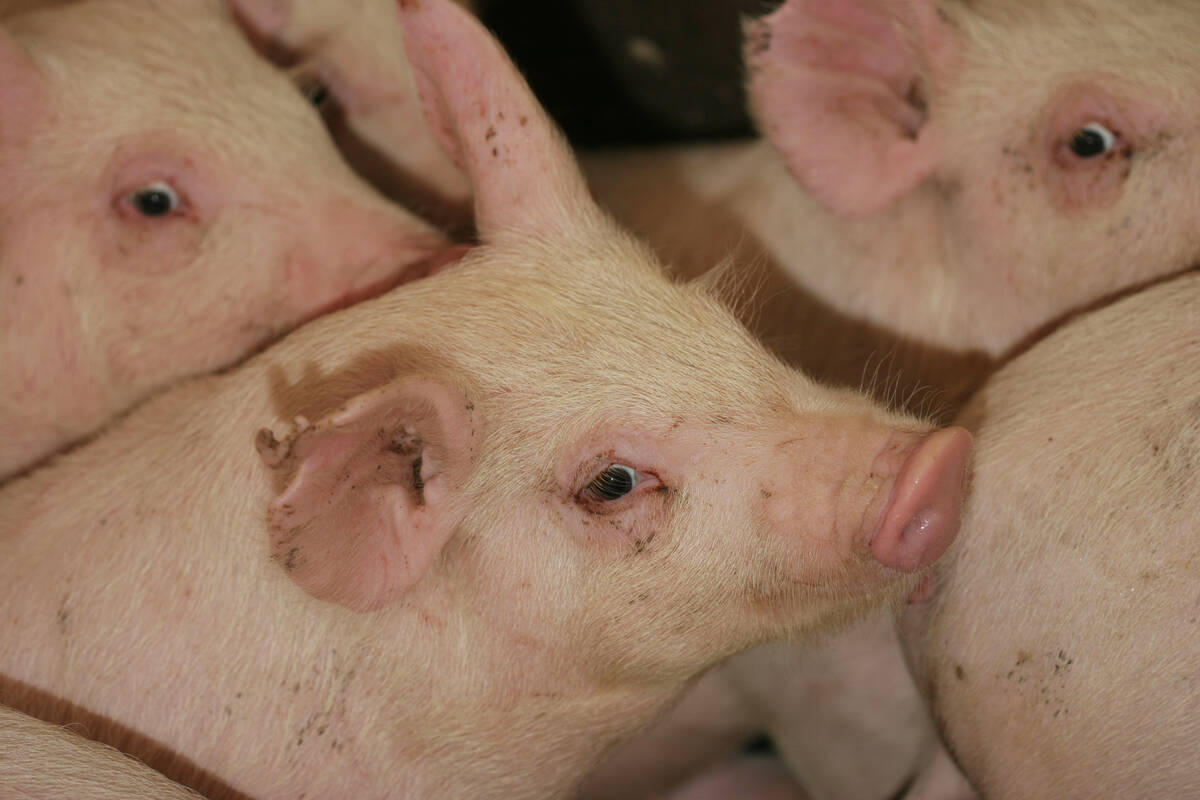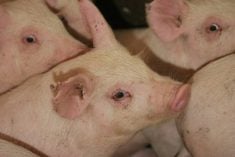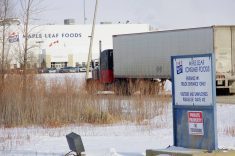PHOENIX, Ariz. – Tom Hougen knew almost nothing about BVD until he had positive diagnoses on his Montana ranch.
After attending a producer meeting about bovine viral diarrhea virus and persistent infections in 2003, he started to suspect the disease was responsible for sick calves and unexplained abortions among heifers.
He did nothing until 2004, when he started testing and vaccinating his cattle as the problem worsened.
“There have to be a lot of producers like me who have no idea about PI BVD,” he said during a producer panel discussion held as part of an international BVD symposium.
Read Also

The Western Producer Livestock Report – September 25, 2025
The U.S. national live price average for barrows and gilts was $81.21 Sept. 17. It was $78.37 Sept. 9. U.S. hogs averaged $106.71 on a carcass basis Sept. 17, up from $106.10 Sept. 9.
“The loss to my ranch was probably at least a $25,000 hit each year. I could have done a lot of vaccinating for the cost of those PI calves (persistently infected animals that are lifelong carriers of the disease).”
Hougen said the disease is an annual challenge for him. When he contacted a feedlot operator who bought his cattle, he learned there was a higher than average death loss.
It was difficult to round up cattle for testing and vaccination because Hougen’s property is spread out and he never matched calves to cows in an identification program.
He found 39 persistently infected calves among 1,200 in his first round of testing. Twenty died and he isolated the others. Some looked normal but all but five died.
By 2005 he was finding no persistently infected calves, but he has continued to vaccinate and test.
“Now when I find a dead calf, I test it,” he said. “If you suspect a problem, I think you need to screen your whole herd.”
He thinks his infection troubles started when he sent 900 cows to another state for grazing one year.
He joined a Montana screening program in 2006, which has tested 539 herds involving 174,873 cows. Nearly 150 persistently infected animals have been detected.
Jim Palmer, manager of the Matador Cattle Co. that runs 10,000 head on ranches in Texas, Montana and Kansas, started noticing conception problems on the Kansas operation in 1989. Testing detected the virus but no persistently infected calves.
“I had never heard of persistently infected,” he said.
The company’s ranches in Montana and Texas are free of the disease, but a vaccination program was introduced for all new cattle entering any herd.
Replacement heifers and yearlings for a grazing program arrive each year in Kansas and testing finds one or two persistently infected animals that have to be removed.
The company also sells replacement females and customers request BVD testing, which costs $1.50 to $3 per test.
“It is a customer service and I think it is good business,” he said.
Palmer said producers need to realize this is a serious disease threat.
“From a producer standpoint, you need to get it out to every producer that this is real.”
Hougen said disease information sessions should be a topic at every farm meeting, while Palmer wants more information on the most effective tests and vaccines.
“When you are weaning 99 percent of your branded calves, you may think you don’t have a problem, but we did,” Palmer said.
Purebred Angus producer Bill Richell of North Platte, Nebraska, has not found a case in his 40 years of business but he does maintain biosecurity plans, testing and vaccination.
“If you can convince producers about biosecurity programs, you will be more successful in controlling BVD problems.”
He sells purebred breeding stock and sees his health program as part of a responsible customer service plan.
“We have a lot of producers who feel once the calves leave the gate, it is somebody else’s problem,” he said.
Richell keeps detailed herd records so he can compare problems and successes year to year.
He started testing for BVD many years ago and discovered other problems that mimic the symptoms, such as poor semen quality, noxious weeds, trichomoniasis, poor nutrition and bad weather.
All his cattle are vaccinated. Three doses of live modified vaccines are given to replacement heifers before weaning and breeding.
He has also vaccinated his entire cow herd between calving and breeding if respiratory problems are noticed in calves.
Bulls receive two doses of vaccine before breeding.
Nutrition for pregnant and nursing cows is paramount.
“The nutrition level of the cattle at the time of vaccination has so much to do with the immune response you get,” he said.
Richell’s records also reveal whether his cows have adapted to their environment and if they produced vigorous calves at birth.
“It is very important that you or your people pay attention to that. That has a lot to do with immune response. It will go a long way to identifying if you have a BVD problem.”
He also advised producers to look at the percentage of live calves at weaning. Survival is related to genetics, poor nutrition, disease and suppressed immune systems.
Richell said it pays to have a necropsy done when calves die to see what happened.
There is no such thing as zero tolerance, but within his biosecurity plan he tries to limit exposure to unknown herds and know if the neighbours share a similar management philosophy.
Producers should maintain the lowest possible animal density and know the source of replacement females. New animals should be isolated for several weeks before they enter the herd.
Bulls should come from a herd with known health records and testing programs.















